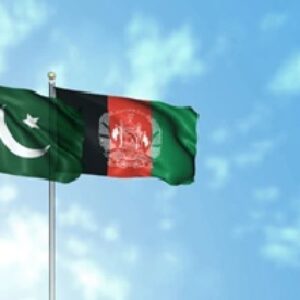~ By Sriharsha Masabathula
As Myanmar undergoes political and economic transition, India is keen on rediscovering its traditional role in the international community. As the international community moves to offer various synergies to support Myanmar’s on-going reform process, India has reaffirmed through its “Act-East” Policy that Myanmar is one of it’s most significant partners towards the East.
Historically, India and Myanmar were part of the same administrative setup during the colonial era. More significantly, the preeminence of Buddhism in Myanmar and Buddhism’s historical relationship with India, gives an average citizen of Myanmar a natural affinity towards India. It is often remarked that “Myanmar can get anything from any part of the world, but for Nirvana, it needs India”! Today Yangon, once famously known as Rangoon, houses the tomb of Bahadur Shah Zafar, the last Mughal Emperor, where he died in Exile. The House of Memories is a delight to visit, with pictures of Netaji Subash Chandra Bose with the Burmese national hero General Aung San lined along the walls, signaling a strong bond of friendship and trust between them. More significantly, India is omnipresent in Myanmar, through food, celebration of Indian festivals, business, religion, language, and more, signifying a strong zeal of many present-day residents to stay connected to their Indian ancestrial roots.
Within India as well, Burma strikes a chord with many, particularly among the ancestry of many business communities. Even today, many places in South-India have localities named after Burma. The “Burma Bazaar” in Chennai is one of the most notable, but other smaller localities exist in many towns, such as the quiet “Burma Colony” in the coastal-town of Kakinada, Andhra Pradesh, where veterans stand ready to relay stories of themselves or their forefathers who traveled to Burma amidst testing circumstances to make a living, or sometimes a fortune. In recent times, many young Indian entrepreneurs are exploring the country’s vast business potential, often driven by passion to reconnect with experiences of their ancestors. The yearning for a more active connection from both sides stands deep today, and to negate the risk of losing this fragile link in the future, it is important to document and preserve the memories of our ancestors, and support those who are striving to reestablish and further strengthen that connection.
Geographically, the most obvious line of interaction between the two nations is of course, trade and commerce, through both road and sea-routes. Currently, the bilateral trade between India and Myanmar amounts to over USD 1 Billion, but there is enormous scope for enhancement, particularly through investment in infrastructure, and trade in commodities, pharmaceuticals, textiles etc. In terms of improving connectivity, which is a critical factor, the prospects look bright with the Kaladan Multi-modal Transit Transport Project, which is expected to significantly reduce shipping time, paving way for increased collaboration, upon its completion in 2016. A tri-lateral highway is also being constructed across the Indian North-east, Myanmar and Thailand which will open up direct road access to Thailand from India, also facilitating a cost-effective entry into the ASEAN markets for Indian businesses and investments. Most urgently, however, an Indian bank is needed in Myanmar, which will not only provide incentive for more pro-active Indian investments in Myanmar, but also facilitate better accounting of existing trade and fund-transfers, which are presently routed through Banks in Singapore, or via other means.
Government-to-Government (G2G) cooperation has been on-going with Myanmar, most prominently over the last decade in various sectors such as defense, technology, skill-development and commerce. Various linkages have been established, for instance between the Confederation of Indian Industry (CII) and the Union of Myanmar Federation of Chambers of Commerce and Industry (UMFCCI) and the Myanmar Computer Federation (MCF). Many exchange programs for capacity building activities and cooperation, particularly in the defense, governance and administration sectors are also underway. It is, however, widely perceived that the relationship though cordial, lacks intimacy. An important factor is to carefully shape the perception of Myanmar citizens on India as a partner, and if G2G initiatives are not reflected in civil society, India may lose-out on being acknowledged for its substantial contributions to Myanmar’s reform process.
Another important issue concerning India – Myanmar relations is the state of affairs on the border areas, which have long been notorious for conflict, illicit trade, and civil unrest. In recent times, the situation in Rakhine State, along the western coast-line of Myanmar, has increasingly become a cause for concern. The complex history of this region bestows the place with diverse communities, and ineffective management is a recipe for disaster. Most notably, there was large-scale migration to and from Myanmar during colonial times for economic opportunities, and the introduction of new administration and land laws in the region by the British, upset the existing social fabric, with dominant groups often losing social-power to newly designated local leaders.
Today, the Rohingya community in this region remains stateless, staying in Internally Displaced People (IDP) camps, with little access to basic needs. Historically, there have been people living in this region under different administrative setups, including small kingdoms, but many communities also migrated between this region and elsewhere, courtesy the colonial times. In recent times, there has been increased intelligence that many extremist elements are taking advantage of the unrest in the region to distort the narrative, causing further confusion regarding the identity of the Rohingya people, and the real issues at hand. The intertwined history of this region needs better documentation, and balanced representatives to identify the key-issues, and a cohesive strategy to address it.
The primary goal must be to uphold human rights and civil liberties, but at the same time, elements which are diverting the discourse, and misguiding the commons, must be dealt with immediately and severely. As a long-term solution, the region must be empowered with social and economic progress, failing which the state of affairs in the region will only create more room for disaster. India has much to offer on security and conflict management in this region. For instance, the historic alliance between BJP and PDP in Jammu and Kashmir stands as a befitting testimony to India’s often underrated success in achieving inclusive democratic objectives in a diverse and challenging environment. Exchanging similar best-practices will not only strengthen the stability of Myanmar in its reform process, but also help facilitate improved socio-economic and cultural relations in the region.
An often less-noted dimension of cooperation is natural resource management. As Myanmar is getting ready to implement its environmental conservation law, India could offer valuable lessons through its own experience, particularly in managing national parks, biodiversity preservation, stakeholder engagement, or even environmental impact assessments. India’s numerous biodiversity hotspots could serve as sites for knowledge sharing, and also institutional capacity building through high-quality training facilities such as the Forest Research Institute in Dehradun. Moreover, water is an abundant resource in Myanmar, with high need for prudent management, and a priority sector in India for sustainable development. Going forward, there may be room for much collaboration between both nations on water policy, river basin management and even hydro-energy. Lessons from India may not only be useful, but also more relevant when compared to similar technical assistance from Western counterparts.
The tryst between India and Myanmar is truly multi-dimensional, and forging a mutually-beneficial people-driven strategy for building a civilizational partnership has the potential to bring much prosperity to both nations, which are ready to erupt on the global platform, each in their own way.
Sriharsha Masabathula is a Young India Fellow, 2014. The views expressed are his own.




